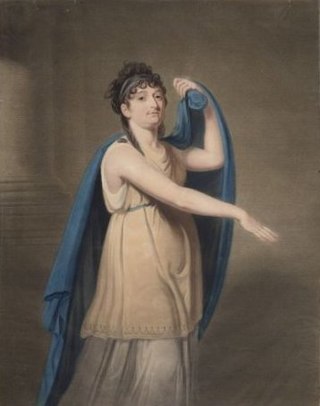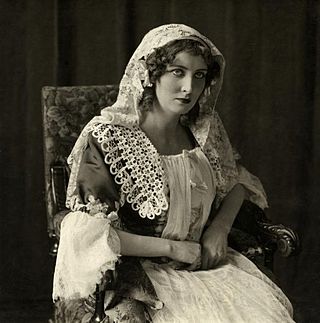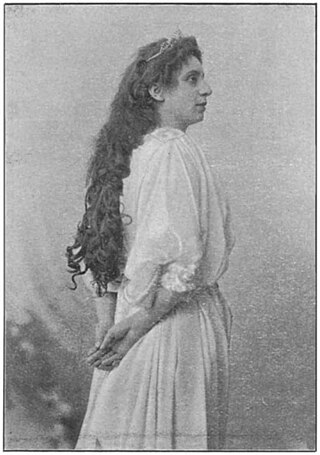
Middelburg is a city and municipality in the south-western Netherlands serving as the capital of the province of Zeeland. Situated on the central peninsula of the Zeeland province, Midden-Zeeland, it has a population of about 48,000.

Wilhelmina Jacoba Pauline Rudolphine "Mina" Kruseman was a 19th-century Dutch feminist, actrice and author who used to call herself Oristorio di Frama.

The Theatre of Van Campen was a theatre located at Keizersgracht 384 in Amsterdam. It was the first city theatre, based on the Teatro Olimpico in Italy. Since 1999 the building has been occupied by "The Dylan" hotel.

The Stadsschouwburgof Amsterdam is the name of a theatre building at the Leidseplein in Amsterdam, Netherlands. The building is in the neo-Renaissance style dating back to 1894, and is the former home of the National Ballet and Opera.

Maria Johanna Kleine-Gartman was a Dutch stage actress and drama teacher.

Johanna Cornelia Wattier was an 18th-century actress from the Northern Netherlands, known for her performances in Amsterdam. She made her debut at 15 in 1778 in Rotterdam and in 1780 at the Stadsschouwburg Amsterdam. After a few years she became the latter's main actress.

Tjitske Jacoba Reidinga is a Dutch actress and comedian. Reidinga began her career on stage and acted in numerous plays. She won a Colombina award for her role in Who's Afraid of Virginia Woolf? in 2002. She made her screen debut in 1996. Her first major film role was as "Jet" in Ja Zuster, Nee Zuster (2002). She is probably known best for her role as 'Claire' in the successful Dutch series Gooische vrouwen.

Catharina Questiers was a Dutch poet and dramatist. Along with Cornelia van der Veer and Katharyne Lescailje, she was the most successful female Dutch poet of the second half of the 17th century. Her brother David also achieved some note as a poet.

Maria Francisca Bia known as Mimi Bia and as Mimi Engelman-Bia and Mimi de Vries-Bia was a Dutch ballet dancer, opera singer (soprano) and dramatic stage actress. Starting her career as a ballet dancer, she had a parallel career as both a soprano opera singer as well as a dramatic stage actress at the Amsterdamse Schouwburg, where she had a dominant role within the Dutch theatre world. She was the manager director and owner of the theatre Utrechtse Schouwburg in Utrecht in 1875-1880.
Anna Maria de Bruyn was a Dutch stage actress and ballet dancer.

Suzanna Nannette Sablairolles was a Dutch stage actress.
Susanna van Lee was a Dutch stage actor and ballet dancer.
Dorotea van Fornenbergh, was a Dutch stage actor.

Mientje Kling was a Dutch theatre and film actress and radio personality.
Caroline Anne Freiin de Westenholz is an Anglo-Dutch art historian and writer. She is the founder of the Louis Couperus Museum in The Hague.

Isabella Henriette van Eeghen, usually cited as I. H. van Eeghen, was a Dutch historian who worked for the Stadsarchief Amsterdam.
Catharina Petit (1660–1740) was a Dutch stage actor.

Jacqueline Royaards-Sandberg was a Dutch stage actress of the 19th and 20th centuries. She began acting on stage in 1897 and did it professionally from 1901. Royaards-Sandberg worked for the Royal Dutch Theater Association, the Het Masker, the Amsterdam Theater Company, the Dutch Comedy, Theater, Ensemble and the Amsterdam Toneel companies.

Betty Holtrop-van Gelder was a Dutch actress and teacher.

Wilhelmina Elisabeth Jacoba van der Horst-van der Lugt Melsert was a Dutch actress. She performed at the Rotterdamse Schouwburg and later became a leading actress at the Royal Dutch Theatre.














